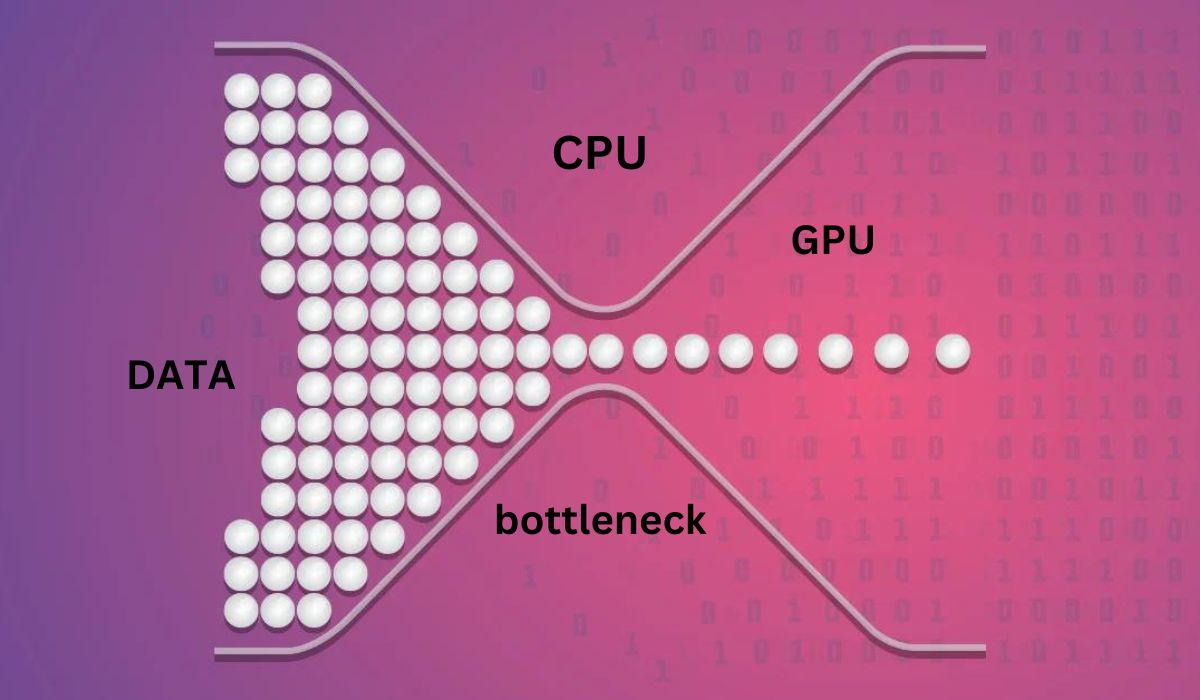Whether for games or for serious business, a powerful computer is a must in today’s lightning-fast digital world. However, hardware limitations can sometimes prevent our systems from performing optimally. To achieve peak performance, it is essential to identify and eliminate these obstacles. This post will explain what bottlenecks are, how to find them, and why a bottleneck calculator may help you get the most out of your system.
What is a Bottleneck
The term “bottleneck” is used to describe a limiting factor in a system. It’s a bottleneck that prevents the system from reaching its full potential. CPU, GPU, RAM, storage, and networks are only some of the computer gear that can become bottlenecks.
Understanding Hardware Bottlenecks
It is crucial to recognize how various pieces of hardware can become stumbling blocks in order to address bottlenecks efficiently:
CPU Bottlenecks
The CPU, or central processing unit, is the “brain” of a computer. It performs the majority of the calculations and operations required by programs. When the central processing unit (CPU) is overwhelmed by all the tasks that need to be completed at once, performance drops.
GPU Bottlenecks
Images, movies, and 3D graphics are all rendered and displayed thanks to the Graphics Processing Unit (GPU). When the GPU’s data processing speed falls short of what’s required by the application or game, a bottleneck is said to exist. The visual performance and frame rate of the game may suffer as a result.
RAM Bottlenecks
RAM, or random-access memory, is a type of temporary computer memory that stores information the processor often accesses. When there isn’t enough RAM in the system to meet the needs of the running applications, the system experiences a RAM bottleneck. Because of this, loading times may lengthen and performance may suffer.
Storage Bottlenecks
When a storage medium such a hard disk drive (HDD) or solid-state drive (SSD) becomes a limiting issue, this is known as a storage bottleneck. When working with large files or applications, slow read/write speeds can have a major influence on system performance.
Network Bottlenecks
Data transmission delays between a computer and a network (such the internet or a local network) are known as network bottlenecks. Accessing online resources, downloading/uploading files, or streaming media might be slowed by slow network speeds or congestion.
How to Identify Bottlenecks
When dealing with performance difficulties, pinpointing the source is essential. In order to zero in on the precise bottlenecks, consider the following strategies.
Monitoring Task Manager: Launch Task Manager to keep tabs on how your computer’s processor, graphics processing unit, memory, and storage are being utilized. A bottleneck may exist if one resource regularly obtains high use while others remain underutilized.
Benchmarking Tools: Use a performance measuring tool, such as 3DMark for graphics or Prime95 for processing speed. Insights on component-level performance and possible bottlenecks can be gained with the use of these instruments.
Performance Monitoring Software: Utilize real-time system information by installing performance monitoring software like MSI Afterburner or HWiNFO. These instruments are useful for pinpointing bottlenecks and restrictions in individual components.
Bottleneck Calculator
Users that are interested in maximizing their system’s potential will find the Bottleneck Calculator to be an invaluable resource. It aids in locating potential slowdowns in their system’s hardware configuration. To determine where your system may be slowing down, you can enter data about your computer’s central processing unit (CPU), graphics processing unit (GPU), random access memory (RAM), and storage.
How Does the Bottleneck Calculator Work
The Bottleneck Calculator examines your computer’s processor, graphics processing unit, random access memory, and storage devices to identify bottlenecks in performance. Clock speeds, core/thread counts, memory sizes, and storage media are all taken into account.
When you plug in your system’s specs, the calculator checks how each component measures up against one another in terms of performance. The calculator then recommends changes to the system that should be made to remove the bottleneck and boost performance.
Benefits of Using a Bottleneck Calculator
There are many benefits of using a bottleneck calculator while trying to improve system performance:
Saving Money and Time: If you know where your system is slowing down, you can make targeted improvements or optimizations without having to replace any extraneous parts.
Optimal Component Pairings: To get the most out of your system, use the bottleneck calculator to make sure everything is in harmony.
Future-Proofing: You can make sure your system can continue to run new software and hardware by detecting potential bottlenecks and then upgrading or improving it.
Optimizing Your System
After utilizing the calculator to determine where your system is struggling, you can move on to optimizing it. Some potential approaches are listed below.
Upgrading Components: Consider updating the bottlenecking component as suggested by the bottleneck calculator. Increasing the amount of memory or switching to a faster CPU are two ways to speed up your system.
Overclocking: Overclocking the central processing unit (CPU) or graphics processing unit (GPU), if supported by the system, can improve performance. Be careful, though, and keep things cold to avoid overheating and ruining them.
Storage Optimization: Choose solid-state drives (SSDs), which can read and write data far more quickly than conventional hard disk drives (HDDs).
Software Optimization: Update your OS and drivers, tweak your applications, and kill any background activities you don’t need to free up system resources.
Conclusion
The performance of your system can be greatly improved by identifying and eliminating any limiting hardware components. Finding and fixing slowdowns improves performance for everyone, from serious gamers to busy professionals to casual computer users. Optimizing your system with the bottleneck calculator and other tools will help you release its full potential and give users an excellent experience.











